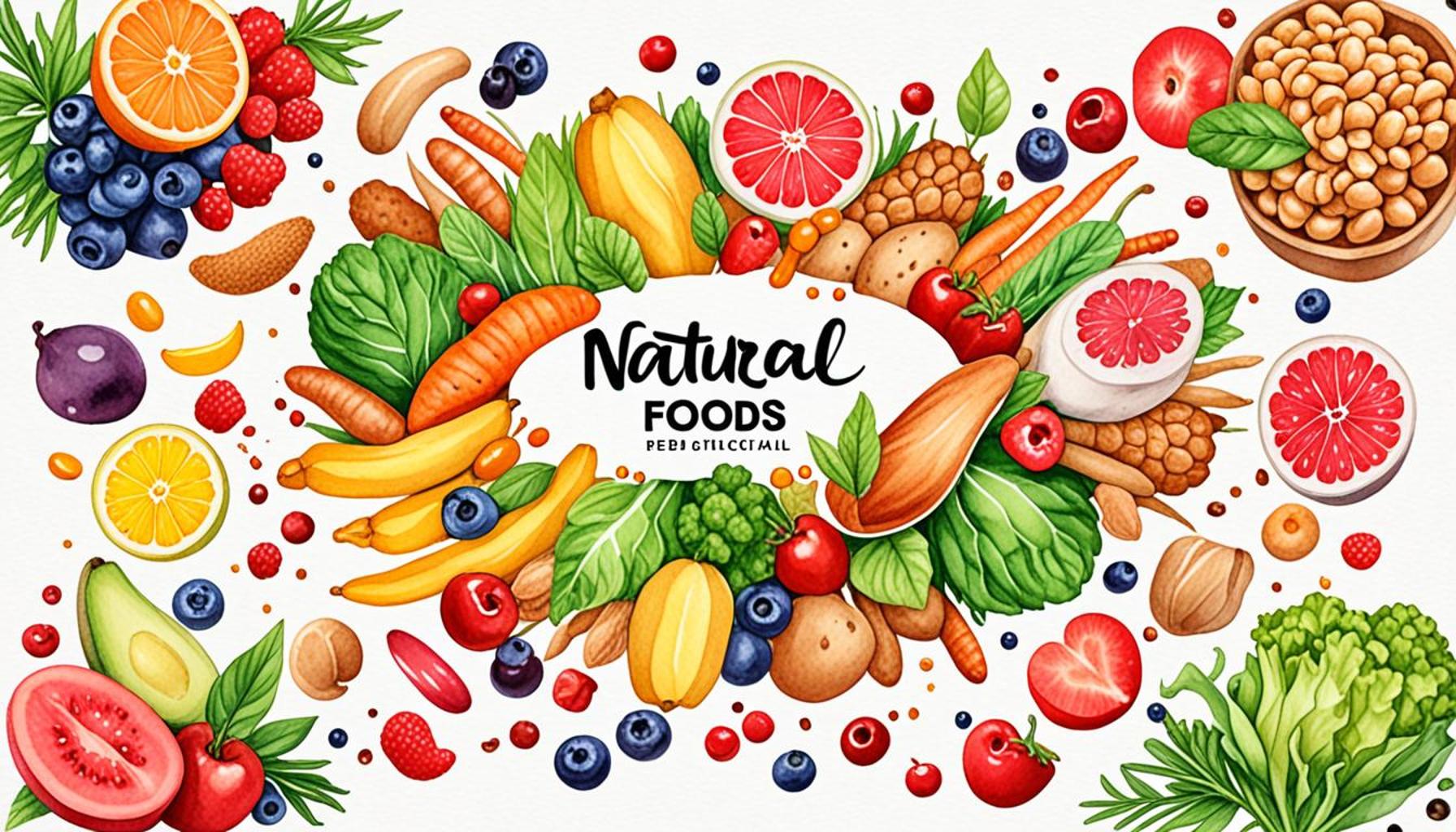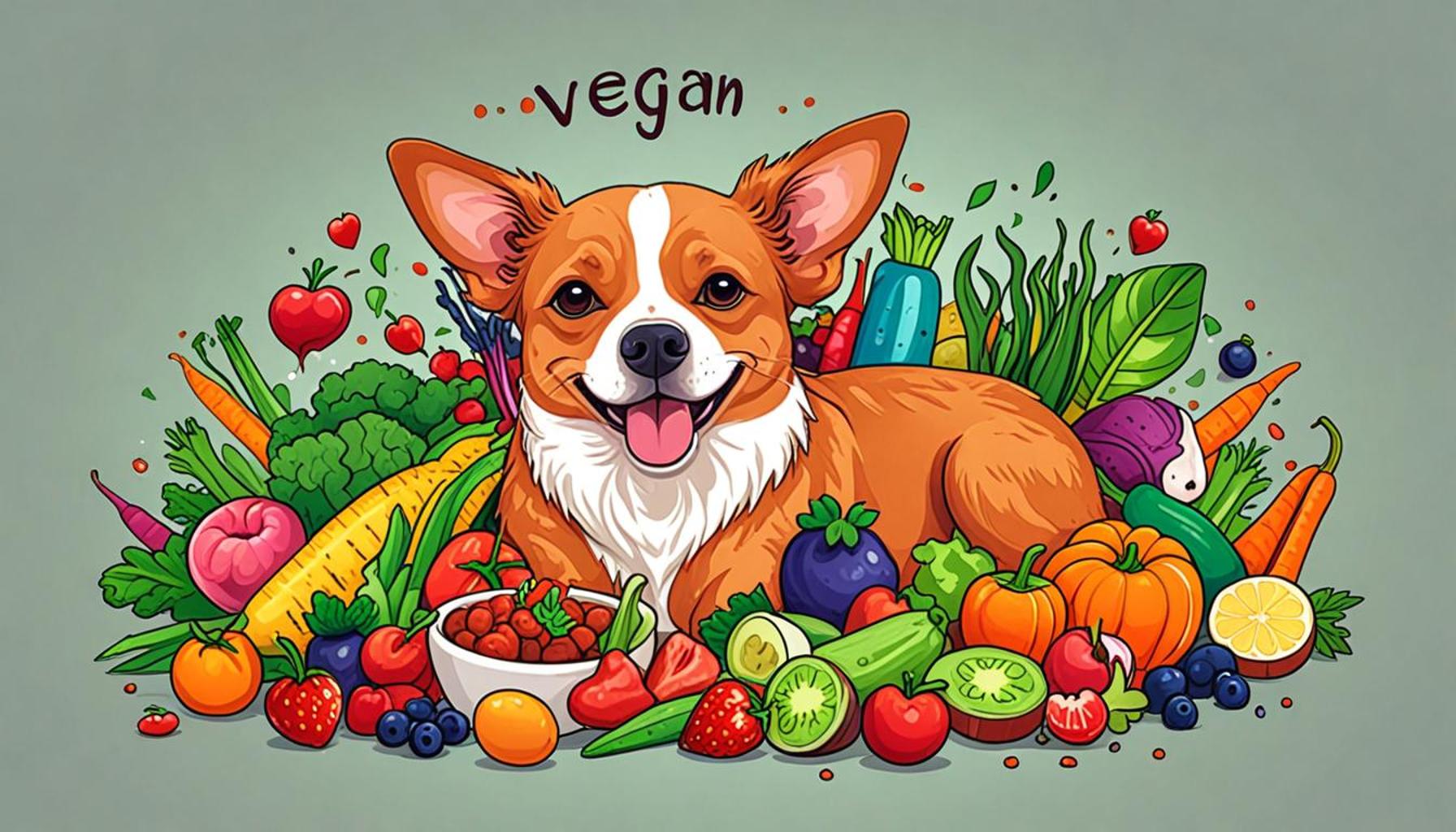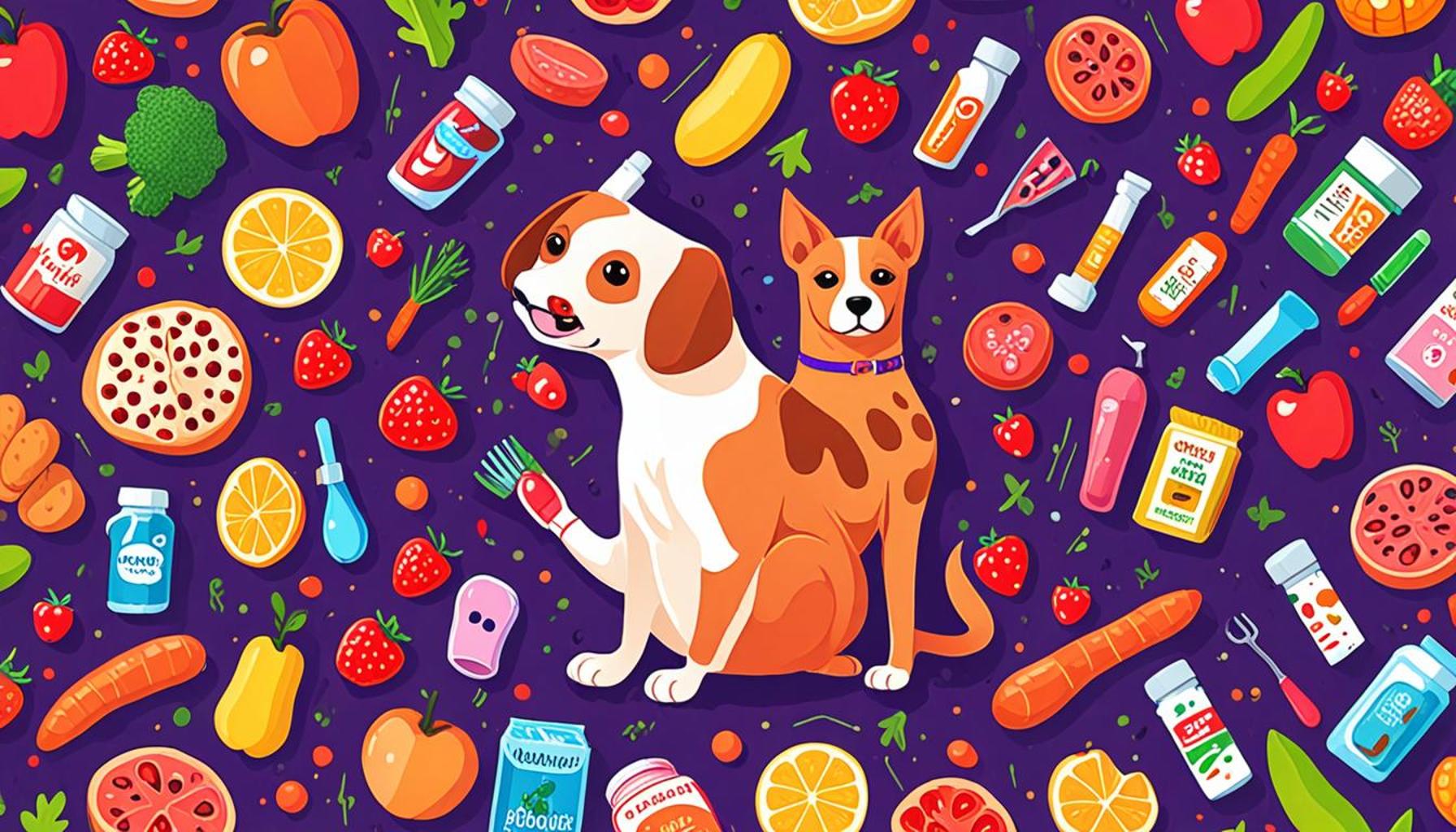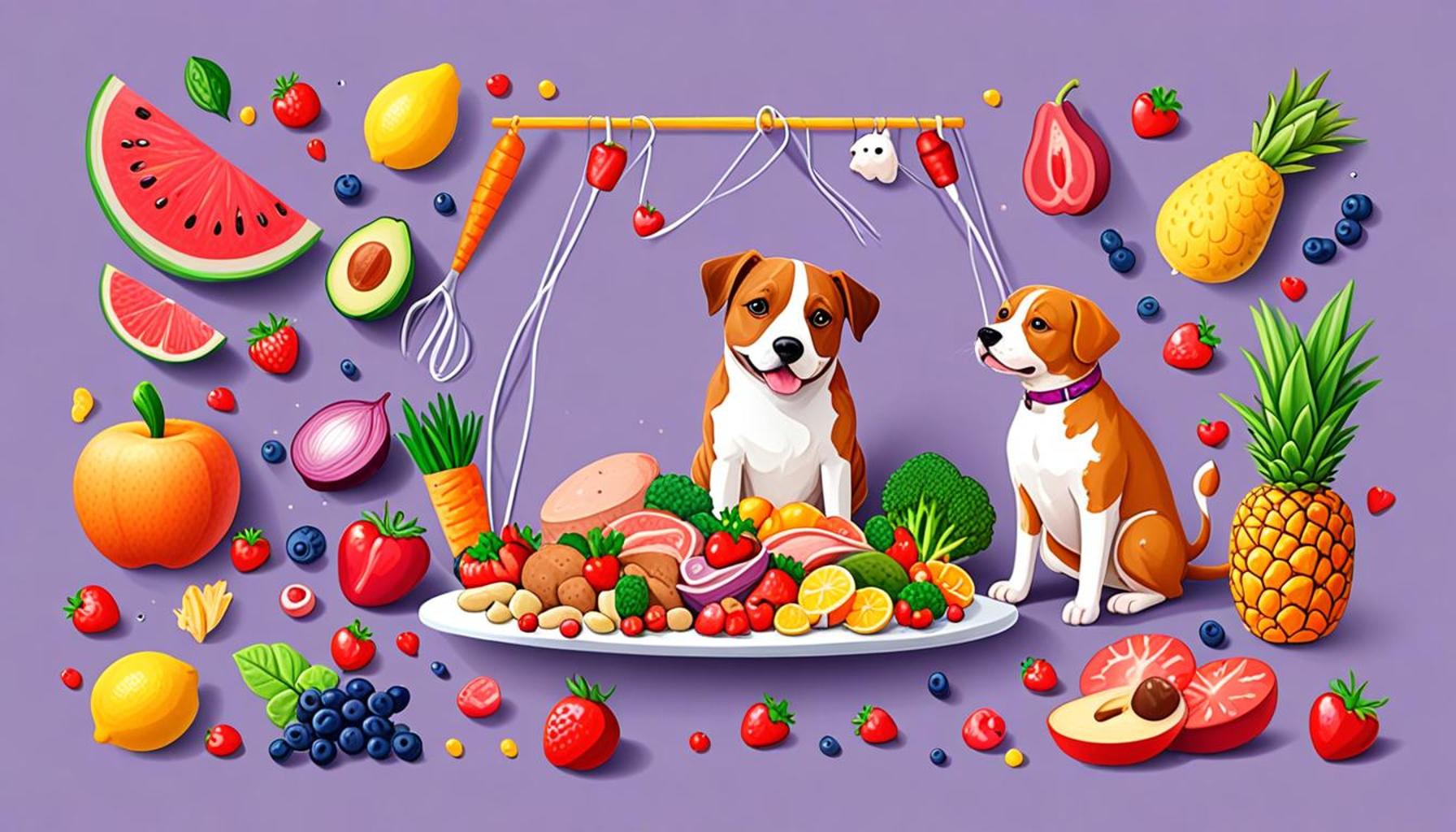Natural Foods vs. Commercial Food: What Is Better for Your Pet?

Evaluating Your Pet’s Dietary Choices
As pet owners, we constantly strive to provide the best for our furry friends. The choice between natural foods and commercial food has never been more critical. With numerous brands and options available, understanding the differences is essential for your pet’s health. The ingredients in your pet’s diet can significantly impact their overall well-being, energy levels, and even longevity.
When discussing natural foods, consider the following features:
- Whole Ingredients: Natural pet foods typically emphasize whole ingredients, focusing on real meat, vegetables, and grains, while being free from artificial preservatives and additives. For instance, brands like Merrick and Blue Buffalo often pride themselves on sourcing high-quality proteins without the use of chemical additives.
- Freshness: Many natural pet foods are made with minimally processed ingredients. This approach preserves nutrients better than heavily processed alternatives, thereby offering your pet the freshest and most beneficial meals possible. Some companies even offer raw diets that use fresh meats and vegetables right from the farm.
- Customization: Natural diets can be tailored based on individual pet needs, such as allergies or health conditions. For example, a dog with a sensitive stomach might thrive on a limited-ingredient diet, which many natural brands offer.
On the other hand, commercial food can offer several appealing advantages:
- Convenience: Commercial foods are available at local stores, making them accessible for everyday pet owners. Whether you prefer traditional dry kibble or convenient canned options, the variety is endless.
- Cost-effectiveness: Generally, commercial pet foods are more budget-friendly, making it easier for families to maintain a consistent feeding regimen. Brands like Pedigree and Purina offer options that are often less expensive per serving compared to premium natural foods.
- Formulation: Many commercial foods are nutritionally balanced and fortified with vitamins and minerals, ensuring that your pet receives essential nutrients for growth, health, and vitality. Look for products that meet the standards set by the Association of American Feed Control Officials (AAFCO).
The debate between natural and commercial foods raises several compelling questions. How do these options impact your pet’s overall health? What ingredients should you avoid or seek out in either category? For instance, it’s wise to avoid foods that list by-products, artificial colors, and excessive fillers like corn and soy, which can lead to nutritional gaps.
As you delve into the complex world of pet nutrition, exploring the benefits and drawbacks of each food type, consider your pet’s specific needs, preferences, and any health issues. Consulting with a veterinarian can provide crucial guidance tailored to your pet’s unique dietary requirements. With a little research and consideration, you can discover which dietary choice is the best fit for your beloved companion and contribute to their happy, healthy life.

DIVE DEEPER: Click here to learn more
Understanding the Nutritional Landscape
Navigating the world of pet nutrition can feel overwhelming with a vast array of options available on the market. The choice between natural foods and commercial food isn’t simply a matter of preference; it involves understanding the nutritional profiles, ingredient sourcing, and potential impacts on your pet’s health. To make an informed decision, it’s vital to examine the key differences between these two dietary categories.
The Appeal of Natural Foods
Natural foods have garnered attention from conscientious pet owners for various reasons. Their emphasis on wholesome, recognizable ingredients tends to resonate with individuals looking for an authentic and transparent feeding option. Here are a few components that make natural food a topic of discussion among pet owners:
- Real Meat as the First Ingredient: Many natural pet food brands highlight real meat as the primary ingredient, which offers a rich source of protein for your pet. This is essential for maintaining muscle mass and supporting overall health.
- No Artificial Additives: Natural foods often steer clear of artificial preservatives, colors, and flavors. This can significantly reduce the risk of digestive issues or allergic reactions, making it an attractive choice for pets with sensitive systems.
- Focused on Whole Foods: With natural options, you’re more likely to see whole grains, fruits, and vegetables included. These ingredients offer added fiber and essential vitamins, contributing to overall well-being and digestive health.
But the natural food category isn’t without its challenges. Availability can be limited, and these products might carry a higher price point compared to their commercial counterparts. However, many pet owners believe the benefits outweigh these drawbacks, especially for pets with specific dietary needs.
The Benefit of Convenience in Commercial Food
On the flip side, commercial food remains a staple choice for countless pet owners due to its accessibility and variety. Supermarkets and pet stores offer a range of options, making it easy for pet owners to find something that fits their budget and their pet’s taste. Below are some features that draw many to commercial dog and cat food:
- Wide Availability: Major brands like Iams and Royal Canin are readily available at retail locations all over the U.S., providing a convenient solution for pet owners without access to specialty stores.
- Affordability: Generally, commercial foods are less expensive than natural products. A family on a budget may find that brands like Beneful provide adequate nutrition without breaking the bank.
- Consistent Formulations: Many commercial pet foods offer nutritionally complete and balanced meals that are formulated to meet AAFCO standards. This guarantees that your pet is receiving the nutrients it needs for healthy living.
Despite the benefits that commercial food presents, pet owners often raise questions about the potential inclusion of by-products, fillers, and artificial ingredients. Understanding the labels and sourcing of these ingredients becomes critical in determining the overall value of commercial options.
As you weigh your choices, it’s essential to reflect on your pet’s unique health requirements and preferences. Discussing dietary options with a veterinarian can offer increased insight and clarity, ultimately guiding you to make the best decision for your beloved companion.
| Natural Foods | Commercial Food |
|---|---|
| Whole Ingredients | Convenience |
| Natural foods often contain fresh, whole ingredients without preservatives, offering pets a diet closer to their natural eating habits. | Commercial foods provide a ready-to-serve option, making feeding pets easy and accessible for busy owners. |
| Nutritional Integrity | Regulatory Approval |
| Natural diets often have higher nutritional integrity, as they are less processed, retaining vital nutrients and enzymes. | Commercial foods must meet regulatory standards, ensuring a baseline level of nutrition is provided to pets. |
Natural foods offer numerous benefits in terms of maintaining your pet’s health. They provide a diet rich in essential vitamins and minerals, often leading to improved vitality and a shiny coat. Conversely, commercial food has the edge when it comes to accessibility and ease of storage, making it a popular choice among pet owners short on time. Moreover, many commercial brands invest in research and development to enhance their formulations, ensuring pets receive balanced nutrition tailored to their specific needs.Another aspect to consider is the sourcing of ingredients. Natural food advocates often stress the importance of knowing where your pet’s food comes from, while many commercial brands highlight their commitments to ethical practices and sustainability. The debate over what’s better can provoke strong opinions, but ultimately, it depends on the unique circumstances of each pet owner.In exploring the options, it is crucial to weigh each choice’s pros and cons, ensuring to prioritize your pet’s health and well-being above all.
DISCOVER MORE: Click here to learn effective training methods
Evaluating the Pros and Cons
When deciding between natural foods and commercial food for your pet, it’s essential to delve deeper into their respective benefits and potential drawbacks. Understanding these facets can significantly influence your pet’s health and well-being, ultimately guiding you toward the most appropriate choice.
Natural Foods: The Detailed Perspective
Natural foods have become synonymous with quality and nutritional integrity. However, their advantages go beyond just the ingredients. An important element to consider is the traceability of the food sources. Many natural brands source their ingredients from local farms or regions that prioritize organic farming practices. This not only supports ethical farming but also ensures that the food is fresher, retaining more nutrients.
Moreover, the digestive health of pets can often improve with natural food due to the inclusion of probiotics and beneficial enzymes. These elements work to maintain a healthy gut flora, which is linked to enhanced immunity and nutrient absorption. Some natural pet foods also boast higher omega-3 fatty acids, derived from sources like fish oil and flaxseed, which are essential for promoting healthy skin and a shiny coat.
While the benefits are compelling, there are considerations that pet owners should be aware of. A common concern is the risk of nutritional imbalance. Formulating a balanced meal at home can be challenging, as it requires a thorough understanding of pet nutritional requirements. It’s also essential to note that natural foods might spoil faster due to the absence of preservatives, necessitating careful storage and timely consumption.
Unpacking Commercial Food Brands
Despite some skepticism about commercial food, it’s pivotal to acknowledge that many reputable brands place a strong emphasis on food safety and quality control. The FDA regulates commercial pet food production, ensuring that these products meet specific health and safety criteria, which can provide pet owners with peace of mind. Some companies invest heavily in research and development, leading to innovations such as prescription diets tailored for pets with specific health concerns, such as diabetes or kidney disease.
In addition, commercial foods often undergo rigorous testing and quality checks, which can be an advantage regarding consistency in nutrition. These brands frequently conduct palatability studies to ensure that pets find their food appealing, addressing the often-heard concern about picky eaters. For many pet owners, particularly those who juggle busy schedules or have multiple pets, the convenience of commercial foods—available in shelf-stable formats like dry kibble or canned varieties—cannot be understated.
However, there is also a need for vigilance. Not all commercial pet foods are created equal, and low-quality brands may include cheap fillers, artificial coloring, or low-grade protein sources that can detract from overall nutrition. The presence of by-products or unidentified meat sources can leave pet owners questioning the food’s integrity. Regularly reviewing ingredient labels becomes critical to ensure that your pet’s meal aligns with their dietary needs.
As the prevailing conversation continues regarding the merits of natural foods versus commercial options, it is vital for pet owners to stay informed, leveraging professional advice and thorough research to make choices that best cater to their pet’s unique health profile.
DISCOVER MORE: Click here to learn how pets can boost your well-being
Finding the Right Fit for Your Pet
Deciding between natural foods and commercial food for your pet involves more than just examining the labels—it’s about understanding your pet’s individual needs, lifestyle, and even your own preferences as a pet owner. Each option presents a unique array of benefits and challenges. While natural foods often tout superior ingredient quality and potential health advantages, they require careful planning and knowledge to ensure a balanced diet. On the other hand, commercial foods offer convenience and consistency but can vary greatly in quality and nutritional integrity.
Ultimately, the choice may hinge on specific factors such as your pet’s age, activity level, dietary restrictions, and even your budget. Consultation with a veterinarian can provide invaluable guidance tailored to your pet’s unique circumstances. Additionally, being an informed consumer means paying close attention to ingredient lists and understanding the source and processing of any food you choose.
As pet ownership evolves, so do the options available in the marketplace. Trends toward transparency and ethical sourcing in both natural and commercial food sectors indicate a growing awareness of pet health among consumers. In this ongoing dialogue about what is better for your pet, the most prudent approach is neither wholly adopting one side nor dismissing the other. Instead, a balanced view may lead to informed decisions that prioritize your pet’s health, happiness, and well-being in a complex and ever-changing landscape.


